Hair Loss Types, Causes, Symptoms, And Treatments For It
From roots to remedies, unravel the complexities of hair loss and their diverse solutions

Image: Shutterstock
Hair loss affects people of all races, ages, and genders. It can be triggered by nutrient deficiencies, genetics, medical illness, certain medicines, or hormonal irregularities. There are different types of hair loss out of which some may resolve on their own with proper care. But, in some cases, the hair loss remains persistent and requires medical attention. Keep reading to know the many variations and causes of hair loss along with the symptoms to look for and ways to treat them.

In This Article
Types And Characteristics Of Hair Loss
The medical term for hair loss is alopecia, and it can be scarring and non-scarring. Understanding the different types of hair loss is important for determining the appropriate treatment. Each type has its own characteristics and underlying causes, which can range from genetic factors to environmental influences.
Non-Scarring Alopecia
Non-scarring alopecia, also known as non-cicatricial alopecia, refers to various forms of hair loss caused by changes in the hair cycle, follicle size, and breakage. Non-scarring alopecia is of several types:
- Alopecia Areata: This is an autoimmune condition that causes hair loss on the scalp and other body parts, like the eyebrows, eyelashes, and face (1). Hair fall occurs in patches, leading to complete scalp or body hair loss. Several types of alopecia areata may affect both men and women (1), (2):
- Patchy Alopecia Areata: In this type, hair loss occurs in circular and overlapping patches.
- Alopecia Totalis: This causes complete baldness.
- Alopecia Universalis: This involves total hair loss on the body.
- Alopecia Incognita: This rare form of alopecia causes diffuse hair loss that can be abrupt and intense.
- Ophiasis: Hair loss occurs in a band or wave-like shape along the head’s circumference, specifically near the ears and back of the head.
- Sisaipho: This chronic alopecia (Ophiasis spelled backward) causes hair loss on the scalp, except the borders.
- Marie Antoinette Syndrome: This variant of acute diffuse alopecia causes a sudden “overnight” hair graying and fall.
- Reticular Alopecia Areata: In this condition, hair loss occurs in patches separated by narrow bands of hair, giving a net-like appearance (3).
- Diffuse Alopecia Areata: This causes complete hair loss on the scalp and is often mistaken for androgenic alopecia or chronic telogen effluvium (3).
- Androgenic Alopecia: This is a genetic condition caused by hormones or androgens. Androgenic alopecia affects both men and women and is also known as pattern baldness or pattern hair loss (4). Its prevalence increases with age.
In men, hair starts to fall off when testosterone (the male sex hormone) is converted into dihydrotestosterone (DHT) that attacks the hair follicles. The role of androgens in female pattern hair loss is not completely understood. However, it may affect genetically susceptible women and cause diffuse thinning in the middle of the scalp that gradually increases outwards.
A study on early onset female pattern hair loss comprising 63 patients and 341 individuals in a control group found that the condition is associated with androgen-related features, such as folliculitis, hirsutism, scalp greasiness, and polycystic ovary syndrome. Notably, patients with this condition report a higher frequency of scalp pain and itching.
 Trivia
Trivia- Drug-Induced Hair Loss: Certain medications and steroids like oral retinoids, contraceptives, anti-thyroid drugs, anticonvulsants, vitamin supplements, beta-blockers, amphetamines, statins, and heavy metals may trigger patterned or diffuse hair loss (5). It can be acute or chronic.
Drug-induced Anagen Effluvium (hair loss during the growth phase) occurs within a few days or weeks of taking the drug.
In contrast, Telogen Effluvium occurs two to four months after taking the drug. In this condition, more than 20% of your follicles suddenly go into the telogen phase (resting phase), reducing the number of follicles that are actively growing hair (6). This causes loss of volume, and, eventually, balding.
Some common triggers that induce telogen effluvium are:
- Health Conditions: Malaria, typhoid, covid-19, tuberculosis, thyroid issues, organ dysfunctions, HIV, malnutrition, syphilis, autoimmune diseases, and nutrient deficiencies.
- Stress: Emotional trauma, heavy labor, starvation, crash diets, severe injuries, and surgeries.
- Chemicals: Chemicals in hair dyes and other hair products may cause allergies, resulting in hair loss.
- Postpartum Hair Loss: Women may experience hair loss a few weeks after childbirth. The fluctuating hormone levels cause postpartum hair loss. During pregnancy, the increased progesterone and estrogen levels in the body prolong the anagen phase (hair growth phase). After childbirth, the hormone levels normalize, causing hair loss. Factors like nutrient deficiencies, emotional and physical stress, and hypothyroidism may also contribute to postpartum hair loss (7), (8), (9).
- Stress-Related Hair Loss: Stress affects hair follicle development and the hair growth cycle (10). If left untreated, stress-induced hair loss can lead to serious hair disorders like alopecia, telogen effluvium, and baldness.
- Trichotillomania: This is a compulsive hair-pulling disorder where a person feels an urge to pull out hair. The constant pulling can damage the hair follicles and cause irregular bald patches, severe hair loss, and baldness.
- Traction Hair loss: Tight hairstyles like buns, braids, and ponytails may pull the roots, causing trauma and hair loss. It is reversible in the early stages but may become permanent due to follicular degradation.
- Diffuse Thinning: When hair starts thinning all over the scalp, it may lead to complete hair loss.
- Nutrient Deficiency: Vitamins and minerals play a role in maintaining your hair health. Deficiencies in iron, vitamins C and D, selenium, folate, biotin, and calcium can lead to hair loss. A reduction in carbohydrate intake also leads to hair loss (11).
Scarring Alopecia
Scarring alopecia or cicatricial alopecia refers to various hair loss disorders that cause irreversible damage to the hair follicles. Conditions that may cause permanent hair loss includes:
- Lichen Planopilaris: This chronic inflammatory condition causes permanent damage to the hair follicles. It causes patchy hair loss on the scalp with follicular erythema at the boundaries of the bald patches. It may sometimes be accompanied by a non-infectious rash.
Frontal fibrosa is a type of lichen planopilaris that mainly occurs at the frontal and frontotemporal hairline and eyebrows. It is typically noticed in postmenopausal women. - Chronic Cutaneous Lupus: This is a sub-type of lupus erythematosus, an autoimmune condition. It causes patches on the skin, which evolve into scaly papules. Eventually, the patches form plaques, showing visible atrophy, leading to follicular plugging, telangiectasia (broken blood vessels), and pigmentation.
- Central Centrifugal Hair Loss: This condition can be genetic or triggered by environmental or grooming factors. It is commonly noticed in African women due to their hairstyles that pull the roots. In this condition, you may notice patchy scarring lesions at the crown or vertex. The hair loss occurs in a centrifugal pattern (in an outward direction).
- Frontal Fibrosing Alopecia – This type of hair loss occurs that leads to hair loss at the front and sides of the scalp. The skin on the affected region looks pale, scarred, and shiny. While it is commonly seen on the scalp, the condition may also affect other parts of the body such as eyebrows, eyelashes, and other body parts. While the exact cause behind this autoimmune disease is yet to be discovered, research suggests that it may be linked to genetics, hormones, or surgeries. Even environmental factors like sun exposure, pollutants, infections, and medications may increase the risk of developing frontal fibrosing alopecia (12).
Even children may experience scarring and non-scarring hair loss. Let’s take a look.
Hair Loss In Children
Non-Scarring Hair Loss
- Short Anagen Syndrome: In this condition, the hair does not grow long. However, the hair strength and density are not affected. This is a non-scarring type of hair loss.
- Loose Anagen Syndrome: You may notice little to no hair growth on the child???s scalp in this condition. The strands are loose and cannot anchor into the scalp. Gradually, the hair becomes thin and unmanageable. This condition might be occasionally noticed in adults and is non-scarring.
Scarring Hair Loss
- Temporal Alopecia Triangularis: This is a hair loss disorder noticed in newborns or young children. In this condition, you may notice a triangular or lancet-shaped bald spot on the child???s scalp with little terminal hair growth. It is a non-scarring type of hair loss.
- Tinea Capitis: It is caused by a fungal infection that affects the hair shaft. You may notice patchy hair loss spots with scalp inflammation, like erythema with scalp scales. However, this is curable. It has scarring and non-scarring varieties. Severe infection with nodules and information can turn into a scarring one.
A change or interference in the hair growth cycle is the primary reason for hair loss. Hair grows in a cycle that has four phases:
- Anagen (growth phase)
- Catagen (regression phase)
- Telogen (resting phase)
- Exogen/Neogen (hair fall/birth of new hair)
Multiple factors can disrupt this cycle, hampering follicular growth and causing hair loss. Scroll down to understand the reasons for hair loss.
Key Takeaways
- Alopecia or hair loss can be of various types, like scarring and non-scarring.
- Non-scarring alopecia is caused by changes in the hair cycle, follicle size, and breakage while scarring alopecia causes irreversible damage to the hair follicles.
- Genetic factors, hormonal changes, thyroid issues, pregnancy, stress, scalp infection, unhealthy diet, and medications are a few causes of hair loss.
- Following a healthy lifestyle and hair care routine may help you solve hair fall issues.
Causes Of Hair Loss
1. Genetic Factors
If you have a history of hair loss, you may experience hair loss. Often, conditions like alopecia and pattern baldness run in the family (13).
2. Hormonal And Thyroid Issues
A change in hormone levels like androgens can trigger androgenic alopecia in men and women (4). Imbalance in estrogen and other hormone levels during pregnancy, menopause, and conditions like ovarian cysts and thyroid issues may cause hair thinning and loss.
3. Pregnancy
The estrogen levels increase during pregnancy and decrease post-childbirth. These hormonal shifts may cause hair loss. However, in a few weeks or months of delivery, the normal hair growth cycle resumes. Sometimes, the drugs prescribed during pregnancy may also cause hair loss.
4. Physical And Mental Stress
Physical, emotional, and mental stress increases free radical production, leading to oxidative damage to the hair. This may prevent hair growth and causes hair loss.
Animal studies showed that stress could induce inflammatory effects that inhibited hair growth, induced catagen (regression), and caused hair damage (14).
5. Scalp Infection
An unhealthy and unhygienic scalp can cause bacterial and fungal infections like dandruff. Moreover, the dirt, dust, and sebum accumulation further clog the hair follicles. These may weaken the hair roots and cause hair fall, breakage, and thinning.
6. Medical Conditions
Autoimmune conditions like lupus erythematosus and alopecia cause hair loss. Both conditions can coexist and may mimic discoid lupus erythematosus (a condition causing inflamed, scaly, and crusty patches) (2).
Alopecia areata is often associated with other conditions like depression, anxiety, and autoimmune diseases like thyroid disease, vitiligo, rheumatoid arthritis, and inflammatory bowel syndrome (15), (16). Research suggests that people with alopecia areata are more vulnerable to other autoimmune diseases. In such cases, alopecia areata can also show symptoms of other inflammatory skin diseases like atopic dermatitis, psoriasis, and lichen planus (17).
 Trivia
Trivia7. Medication And Treatments
Hair loss can be a side effect of medications like voriconazole (an antifungal medicine), and antihypertensive, systemic, and other topical drugs (18), (6), (19), (20). These medications may damage the hair follicles, causing hair loss. Other medical treatments like chemotherapy, steroids, and medicine for typhoid, heart diseases, and depression may cause hair fall.
8. Excessive Grooming
Excessive grooming like over washing and aggressively brushing the hair causes dryness, and the traction may cause breakage and falling. Hair products like shampoos, mousses, hair gels, and sprays contain chemicals that may damage the scalp. The high pH levels in the products can disrupt the scalp environment.
Similarly, using heating tools, chemicals, colors, and tight hairstyles can damage and weaken the roots, leading to hair loss.
10. Food Habits
Vitamins and minerals are vital to hair health. The deficiency of protein and essential and trace nutrients like iron, zinc, selenium, calcium, and vitamins A, B, C, and E can lead to hair loss (11).
11. Supplement Abuse
are beneficial only in cases of deficiencies. Excess intake of supplements like vitamins A and E and selenium may cause hair loss, among other health risks (9). The intake of nutrients through foods does not affect the hair and overall health. Always consult a doctor before taking any supplements.
While you may experience some amount of hair loss every day (50-150 strands, depending on the hair length). However, if you notice excessive hair fall, consult a doctor.
When To Consult A Doctor: Symptoms To Look For
Symptom 1: Excessive Hair Breakage And Hair Loss
May indicate
- Tinea capitis (hair follicle infection)
- Structural damage to the hair shaft caused by excessive use of styling products
- Disruption to the anagen phase
Symptom 2: Hair Loss From The Roots
May indicate
- Telogen effluvium
- Underlying conditions leading to androgenic alopecia or drug-induced hair loss
Symptom 3: Scaly, Patchy, Crusty Scalp And Blisters
May indicate
- Scalp issues like discoid lupus erythematosus and alopecia areata
- Lichen planus and other severe fungal, viral, or bacterial infections
- Traumatic hair loss caused by an injury or burns
If you experience any of these conditions, consult a doctor immediately. Here is what to expect during your visit.
Consulting A Doctor: What To Expect
The doctor will conduct a thorough check-up to determine the exact reason for hair loss. They may ask for:
- A complete medical history (to check for a genetic or medical condition)
- A list of past and present medications (to identify drug-induced hair loss)
- The duration and pattern of hair loss (to track the progression)
The doctor may recommend:
- A thyroid test
- Tests to check fungal and bacterial infections
- Scalp inspection to check for inflammation and scarring
- Analyzing your fallen hair strands under the microscope
They may also ask numerous questions to determine the type of hair loss.
| S.No | Common Questions Asked By The Doctor For Hair Loss Diagnosis |
|---|---|
| 1.?? | When did the hair loss start? (duration of hair loss) |
| 2. | Is there any visible pattern? (bald spots, diffuse hair loss) |
| 3. | Are you losing hair from the roots, or are the strands breaking off from the middle? |
| 4. | Do you notice increased shedding or increased hair thinning? |
| 5. | Do you take any prescribed or non-prescribed medication? |
| 6. | At what age did the hair loss start? |
| 7. | Does it only occur during your menstrual cycle? |
| 8. | Are you pregnant or delivered a child? |
| 9. | Are you menopausal? |
| 10. | What does your regular diet look like? |
| 11. | Do you have any thyroid gland issues? |
| 12. ?? | Is there a family history of hair loss? Any other family member(s) experienced hair loss? |
| 13. | What cosmetics, hair styling, and hair care products do you use? |
| 14. | What hairstyles you commonly follow? |
The doctor may further conduct a few tests to diagnose hair loss.
Diagnostic Tests To Determine The Reasons For Hair Loss
1. Pull Test
A basic pull test can help determine if you have hair loss. You can also try this at home. To do this:
- Do not wash your hair for three to four days.
- Hold a bunch of hair strands and pull them gently.
- If more than 10 hair strands fall out, you have hair loss issues.
2. Daily Hair Count
You can perform the test at home on unwashed and washed hair. Here’s what you need to do:
- After combing unwashed hair, collect the fallen hair Keep a count.
- Comb your washed hair and collect the loose hair strands and count them.
- Do this for three days and notice how many hair strands you lose per day.
- If you lose more than 100-150 hair strands per day, you have hair loss issues.
3. Pluck Test
In this test, the doctor will extract a hair strand by the root sheath and examine it under an electron microscope to determine the hair growth phase and defects (if any).
- In the telogen phase, the strand will have tiny bulbs without root
- In the anagen phase, bulbs have a root sheath.
This process is used to determine telogen or anagen effluvium.
4. Wash Test
The expert may collect the loose hair strands you shed while shampooing. The strands are washed, counted, and divided into groups based on their length to determine the hair growth phase percentage.
Hair strands that are shorter than 3 cm are considered telogen vellus hair. Hair strands between 3-5 cm are deemed to have an intermediate length. Strands measuring 5 cm or more indicate that the hair is in the anagen phase.
People with 10% telogen hair are diagnosed with androgenic alopecia.
5. Hair Count Test
This test record the amount of hair loss. It is used to monitor the efficacy of hair loss treatments (medication and natural remedies).
This test can be done at home, before shampooing. To do this,
- Bend your head forward over a pillow or sheet. Comb the unwashed hair from the crown (middle part of the scalp) to the front hairline.
- Count the number of loose hair strands in the comb and the pillow or sheet.
- Repeat this procedure for three consecutive shampoo sessions. If you shampoo your hair every alternate day, perform this test every alternate day.
- Do the test every month to determine the efficacy of the treatment. Discuss the results with a dermatologist.
6. Trichogram
Dermatologists or trichologists perform this test. They collect a sample of about 50-100 hair strands from the scalp and analyze them under a light microscope to determine the number of hair strands in each hair growth phase.
This helps to diagnose telogen or anagen effluvium, short anagen syndrome, and loose anagen syndrome.
7. Trichoscopy
There are two types:
- Dermoscopy: This test helps diagnose early pattern hair loss. The doctor uses a handheld dermascope to examine the hair strand thickness to determine scalp disorders and pattern baldness.
- Videodermoscopy: Videodermoscopy is similar to dermascopy. It uses a videodermascope to get rapid, high-resolution images at different magnifications. The device can also capture images and is often used before a biopsy to determine the right area for sample collection.
Trichoscopic evaluation is broadly grouped into hair signs and pigment, vascular, and interfollicular patterns. Trichoscopy evaluation helps detect different types of alopecia, tinea capitis, and hair shaft disorders.
8. Trichoscan
The Trichoscan is a device that uses both epiluminescence microscopy and automated digital analysis to shows the number of hair strands and their density. It also indicates the percentage of hair strands in anagen or telogen phases. It is often used to monitor patients during hair or scalp disorder treatments.
Procedure: The doctor shaves about 1 sq. cm of the area on the scalp and evaluates the shaved patch after 48-72 hours.
The software automatically analyzes the image and evaluates aspects like the number of hair strands in the area, their density, and terminal and vellus hair strands.
Anagen hair grows immediately and can be seen after 48-72 hours. In contrast, telogen hair doesn’t grow within that time.
9. Scalp Biopsy
The doctor conducts a scalp biopsy under local anesthesia. They use a 4 mm punch to dissect a patch of skin containing hair from the scalp. The hair strands are then counted and evaluated under a microscope.
- In non-scarring alopecia, the sample is collected from the center of the lesion.
- In scarring alopecia, the sample is collected from the inflamed area for the biopsy.
A scalp biopsy can diagnose scarring and non-scarring hair loss. The punch may be used vertically or horizontally to achieve a definitive diagnosis. Usually, vertical punches are used to determines alopecia associated with lichenoid infiltrates.
10. Hair Weight Test
Hair strands are taken from an affected area to determine each strand’s weight. In this process,
- Hair is clipped close to the scalp, right at the baseline, and weighed.
- New hair growth is monitored.
- Once the new hair grows a little, it is again clipped off at the baseline.
- The hair is weighed again to notice any improvement.
These are some tests used to diagnose the type of hair loss. Depending on the diagnosis, the doctor prescribes treatment. The next section explores both medical treatments and natural remedies to manage hair loss and improve hair health. Scroll down for more information.
Treatment For Hair Loss
1. Medical Remedies
Depending on the scalp issue and causes of hair loss, the doctor may suggest different medical treatments (individual and combined therapies) like (11):
- Topical minoxidil is prescribed to manage and reduce hair loss. Minoxidil is often paired with intralesional corticosteroids and creams or anthralin to treat alopecia affecting less than 50% of the scalp. For alopecia affecting over 50% of the scalp, minoxidil is paired with topical immunotherapy psoralens and UV treatment.
- Oral finasteride can manage pattern baldness and androgenic alopecia. However, it is generally avoided for pregnant and postmenopausal women.
- Systemic anti-androgens like spironolactone, cyproterone acetate, or flutamide are used to reduce hair thinning.
- A hair transplant surgery is a solution to manage permanent hair loss caused by scarring and inflammation.
- Drug-induced hair loss resolves once you stop taking medicine. The doctor may suggest alternatives.
- Clomipramine is used to treat severe cases of trichotillomania.
- For tinea capitis, the doctor may prescribe antifungal treatments like griseofulvin, itraconazole, and terbinafine.
- Severe scarring alopecia is treated with antimalarials, intralesional corticosteroids, systemic steroids, or retinoids.
You may use natural remedies to manage hair loss and improve hair health. Oiling treatments, hair masks and packs, and deep nourishing treatments keep the scalp nourished and healthy. Here are some natural ingredients you can use as hair masks or add to your hair care products to maintain hair health.
2. Natural Remedies
Oils For Hair Loss
- Coconut Oil: Coconut oil contains saturated fatty acids that promote hair growth. The lauric acid in the oil eliminates bacteria and fungi to maintain hair health. The fatty acids penetrate the hair shafts to protect, strengthen, and nourish them from within. Coconut oil also prevents protein loss, moisturizes the hair, and increases water retention to keep it healthy (21).
- Argan Oil: Argan oil is a hair moisturizer and is especially effective in soothing psoriasis and dryness to prevent hair loss. It also helps balance sebum production and has antibacterial properties to fight aureus that causes folliculitis decalvans. Saponin extracts from argan oil can inhibit 5-alpha reductase activity and prevent hair loss (22).
- Olive Oil: Olive oil contains oleuropein, a polyphenol that may help manage telogen hair loss. In animal studies, oleuropein induced anagenic hair growth during the telogen phase (23). Another study showed that olive oil could reduce hair loss and other hair issues like dryness and breakage (24).
- Jojoba Oil: Jojoba oil is used in herbal hair loss formulations to help stimulate hair growth (25). A study showed that massaging essential oils like cedarwood, lavender, and thyme with jojoba oil may improve hair growth in patients with alopecia (26).
- Sweet Almond Oil: Sweet almond oil is widely used in herbal formulations for hair loss. It contains vitamin E, an antioxidant, and may prevent hair loss (27). Sweet almond oil strengthens hair shafts and is used in Chinese and Ayurvedic medicine to soothe psoriasis and eczema.
- Essential Oils: Massaging the scalp with a combination of rosemary, thyme, lavender essential oils, and carrier oils like jojoba or grape seed can minimize hair loss. Peppermint essential oil is as effective as topical minoxidil in stimulating hair growth (26), (28), (29).
Fruits For Hair Loss
- Oranges: They are rich in vitamin C, an antioxidant that reduces harmful free radicals and may help keep the scalp healthy and reduce hair fall. Orange peel has antifungal and antibacterial properties and is often used to manage acne (30).
- Apples: Apples contain procyanidin B2, a dimeric derivative extracted from apples. Human studies showed that the topical application of procyanidin B2 could promote hair growth. It may also increase hair density and hair protein content (31).
- Plantain: The topical application of plantain extract may help promote hair growth. Ingesting plantain extract can also improve scalp health by preventing dandruff and unclogging pores (32), (33).
- Avocado: Avocados contain protein and vitamins A, B, B1, B2, E, and C, beta-carotene, linoleic acid, lecithin, calcium, iron, pantoneat acid, potassium, phosphorus, and niacin. These nutrients help condition the hair and also promote hair growth. A study found that applying a mixture of 3% waru leaves extract and 8% of avocado fruit extract could promote hair growth (34).
- Grapes: Procyanidins, found in grapes, have antioxidant, anti-inflammatory, and antifungal properties (26). A study showed that grape seed extracts induced hair growth, reduced dandruff, strengthened hair follicles, moisturized the hair, and helped build hair tissue (35).
- Apricots: Apricot kernel oil contains two essential fatty acids – oleic and linolenic acids – along with vitamin E. They may help keep the scalp healthy and promote hair growth (36). Bitter kernel oil helps reduce hair fall and dandruff (37).
- Peaches: The ethanol extract of peaches can promote hair growth in human dermal papilla cells by prolonging the anagen phase (38). Peaches also have antioxidant, anti-inflammatory, antimicrobial properties and may promote scalp health (39).
- Plum: Plums have a high phenolic content. These antioxidants may fight free radicals to reduce oxidative damage (40). This may help prevent hair fall and damage.
- Guava: Guava leaves strengthen the hair follicles and shaft, increase hair thickness, and promote healthy hair growth (41). The fruit is rich in vitamin C and nutrients and may help maintain overall scalp health.
- Gooseberries: The Indian gooseberry or amla can stimulate hair growth and is used in herbal hair growth preparations. It prevents premature graying and strengthens the hair follicles. Amla also has the highest natural concentration of vitamin C that may reduce hair fall (42).
- Lemon: A study showed that lemon could reduce hair loss and balding. It also helps reduce dandruff, lice, and scalp acne. Lemon also contains vitamin C that may help prevent hair loss (43).
- Cherry: Cherries have antioxidant and antifungal properties. They are rich in phenolic compounds and help reduce oxidative stress. These properties may promote better hair and scalp health (44).
You may consume the fruits or apply them to your scalp and hair for other benefits. Click here to learn more about fruits for hair growth. You may also use herbs to manage hair loss. Let’s take a look.
Herbs For Hair Loss
- Henna: Henna has antifungal properties and is used traditionally to prevent and manage dandruff. It can balance the scalp’s pH level and prevent premature graying and hair fall (45).
- Wild Basil: Basil has anti-inflammatory properties and can help manage scalp issues, infections, and inflammation (46). It may keep the scalp healthy and promote healthy hair growth.
- Shikakai: The use of shikakai as a hair cleanser, especially in Asia, dates back to thousands of years. Massaging a paste made of dried shikakai powder and warm water on the scalp may promote hair growth, strengthen the strands, and improve scalp health (46).
- Ginkgo biloba: 70% ethanol extract of ginkgo biloba may promote hair growth. It is said to improve circulation, nourish the follicles, and keep the hair healthy (47), (48).
- Hibiscus: Hibiscus flowers contain vitamins and antioxidants that promote scalp and hair health. Research showed that hydroalcoholic extract of hibiscus (leaf and flowers) could promote significant hair growth (49).
- Ginseng: Chinese red ginseng may inhibit 5-alpha reductase, improve blood circulation, and promote hair growth. It can also help strengthen the strands (50), (47).
Before using any alternative and natural remedies, always do a patch test to prevent allergic reactions. If you are using oral herbs and medications, consult a doctor to avoid drug interaction. Besides medicines and treatment, following a basic hair care routine is also crucial to strengthening hair and reducing hair loss.
Tips To Reduce Or Manage Hair Loss
- Oil Massages: Massaging the scalp improves blood flow and may stimulate thicker hair growth (51). You can try hot oil massages to improve scalp hydration and health.
- Use The Right Hair Products: Use products that cater to your hair type, texture, and needs. Look for specific ingredients to help with your hair issues. Use nourishing serums and hair tonics to manage hair loss and stimulate hair growth.
- Hair Masks And Packs: Hair masks contain essential nutrients to replenish, strengthen, and nourish the hair. You can use these hair masks once or twice a week. You may even try deep-conditioning treatments.
- Follow A Hair Care Routine: Tight hairstyles and combing or brushing aggressively can lead to hair breakage and hair loss. Avoid heating styling tools if you have any scalp and hair issues. Use them sparingly at the lowest heat setting even after the issue resolves. Avoid hairstyles that pull at the roots or are too tight. They may cause traction alopecia. Also, be gentle while brushing your hair.
- Healthy Lifestyle: Consume healthy food, exercise regularly, and cut down These are key to maintain your overall health (including hair health). Try pilates, yoga, and meditation to relieve stress. Consume a balanced diet and take nutrient supplements to manage deficiencies. Stay hydrated and avoid smoking as it may increase oxidative stress, affect your overall health, and cause hair damage.
- Hair Washing: Wash hair with warm water, then apply shampoo. The warm water opens pores allowing the shampoo to cleanse the scalp thoroughly. Apply conditioner and wash it off with cold water. This flattens the cuticles, sealing the nutrients inside the shaft. Avoid rubbing your hair while drying. Instead, pat or scrunch to avoid hair fall or breakage. Wash your hair not more than twice a week.
- Hair Dyes And Chemicals: Hair dyes contain harsh chemicals like hydrogen peroxide that can damage the scalp. Avoid chemical hair treatments and minimize the use of products containing sulfates, synthetic dyes, fragrances, and preservatives. Opt for doctor-prescribed medicated shampoos and products or mild, sulfate-free hair products.
- Go Organic: Instead of using chemicals and harsh ingredients, opt for hair cosmetics containing organic ingredients. Check for products that contain non-GMO, sustainably sourced, and 100% organic ingredients.
Hair loss (alopecia) can affect anyone irrespective of gender and age. It is caused by multiple factors like genetics, hormonal and thyroid issues, pregnancy, physical and mental stress, scalp infection, and medical conditions. While there are multiple treatment options available, managing your hair loss needs a deep understanding of its cause. So, consult a doctor and follow the prescribed treatment to reduce hair loss. In addition, combining healthy hair care practices, like massaging the scalp, using the right hair care products, and following a hair care routine, may improve this condition.
If the home remedies listed above do not help you in 1-2 months, consult a doctor without delay, as your hair is the barometer of your health. Hair loss could be just a symptom of a developing disease. It is the body’s call for attention and needs proper investigation and treatment if OTC products or home remedies don’t seem to work.
Frequently Asked Questions
Does lack of sleep cause hair loss?
Lack of sleep may indirectly influence your hair health. It is linked to high stress levels, which may contribute to hair loss.
How much vitamin D should I take for hair loss?
Taking 20-50 micrograms of vitamin D may help if you have a deficiency. However, the recommended daily intake (RDI) of vitamin D may differ from person to person depending on the severity of the deficiency. Therefore, consult a doctor to know the correct dosage and avoid self-medication.
Find out the major causes of the hair loss from the video below. Learn about the different types and symptoms of hair loss, as well as treatment options to address this concern and promote a healthier and stronger mane.
References
Articles on StyleCraze are backed by verified information from peer-reviewed and academic research papers, reputed organizations, research institutions, and medical associations to ensure accuracy and relevance. Read our editorial policy to learn more.
- Alopecia: Introduction And Overview Of Herbal Treatment
https://www.researchgate.net/publication/307582836_Alopecia_introduction_and_overview_of_herbal_treatment - Alopecia Areata
https://www.ncbi.nlm.nih.gov/pmc/articles/PMC5573125/ - Alopecia Areata: A Revision And Update
https://www.scielo.br/j/abd/a/vXCLdmVdz8ct6qzkmjBCSyd/?format=pdf&lang=en - Female Pattern Hair Loss: Current Treatment Concepts
https://www.ncbi.nlm.nih.gov/pmc/articles/PMC2684510/ - Drug-Induced Diffuse Hair Loss In Females: An Observational Study
http://www.astrocyte.in/article.asp?issn=2349-0977;year=2014;volume=1;issue=2;spage=80;epage=83;aulast=Garg - Telogen Effluvium: A Review
https://www.ncbi.nlm.nih.gov/pmc/articles/PMC4606321/ - The Postpartum Telogen Effluvium Fallacy
https://www.ncbi.nlm.nih.gov/pmc/articles/PMC4908443/ - Effect Of Pregnancy On The Human Hair Cycle
https://core.ac.uk/download/pdf/82326339.pdf - Diet And Hair Loss: Effects Of Nutrient Deficiency And Supplement Use
https://www.ncbi.nlm.nih.gov/pmc/articles/PMC5315033/ - Stress And The Hair Follicle
https://www.ncbi.nlm.nih.gov/pmc/articles/PMC1868107/ - The Role of Vitamins and Minerals in Hair Loss: A Review
https://www.ncbi.nlm.nih.gov/pmc/articles/PMC6380979/ - Frontal Fibrosing Alopecia
https://www.ncbi.nlm.nih.gov/books/NBK519001/ - Genetics And Other Factors In The Aetiology Of Female Pattern Hair Loss
https://onlinelibrary.wiley.com/doi/10.1111/exd.13373 - Burden Of Hair Loss: Stress And The Underestimated Psychosocial Impact Of Telogen Effluvium And Androgenetic Alopecia
https://www.sciencedirect.com/science/article/pii/S0022202X15309635 - Epidemiology And Burden Of Alopecia Areata: A Systematic Review
https://pubmed.ncbi.nlm.nih.gov/26244028/ - Comorbidity Profiles Among Patients With Alopecia Areata: The Importance Of Onset Age, A Nationwide Population-Based Study
https://pubmed.ncbi.nlm.nih.gov/21616562/ - Dissecting Susceptibility From Exogenous Triggers: The Model Of Alopecia Areata And Associated Inflammatory Skin Diseases
https://pubmed.ncbi.nlm.nih.gov/26416203/ - Alopecia And Nail Changes Associated With Voriconazole Therapy
https://pubmed.ncbi.nlm.nih.gov/24855150/ - Drug-Induced Alopecia: Review Of The Literature
https://pubmed.ncbi.nlm.nih.gov/7631289/ - Drug-Induced Hair Loss And Hair Growth. Incidence, Management And Avoidance
https://pubmed.ncbi.nlm.nih.gov/8018303/ - Effect of mineral oil, sunflower oil, and coconut oil on prevention of hair damage
https://pubmed.ncbi.nlm.nih.gov/12715094/ - The Anti-Proliferative And Anti-Bacterial Activity Of Argan Oil And Crude Saponin Extract From Argania Spinosa (l.) Skeels
https://phcogj.com/sites/default/files/PharmacognJ-11-1-26.pdf - Topical Application Of Oleuropein Induces Anagen Hair Growth In Telogen Mouse Skin
https://www.ncbi.nlm.nih.gov/pmc/articles/PMC4462586/ - Ethnopharmacological Survey Of Home Remedies Used For Treatment Of Hair And Scalp And Their Methods Of Preparation In The West Bank-Palestine
https://bmccomplementmedtherapies.biomedcentral.com/articles/10.1186/s12906-017-1858-1 - Formulation And Evaluation Of Herbal Hair Tonic
https://www.researchgate.net/publication/286529871_Formulation_and_Evaluation_of_Herbal_Hair_Tonic - Complementary And Alternative Treatments For Alopecia: A Comprehensive Review
https://karger.com/sad/article/5/2/72/291462/Complementary-and-Alternative-Treatments-for - Preparation And Evaluation Of Herbal Hair Oil
https://ijrar.com/upload_issue/ijrar_issue_20542769.pdf - Peppermint Oil Promotes Hair Growth Without Toxic Signs
https://www.ncbi.nlm.nih.gov/pmc/articles/PMC4289931/ - Rosemary Oil Vs Minoxidil 2% For The Treatment Of Androgenetic Alopecia: A Randomized Comparative Trial
https://pubmed.ncbi.nlm.nih.gov/25842469/ - Hesperidin from Orange Peel as a Promising Skincare Bioactive: An Overview
https://www.ncbi.nlm.nih.gov/pmc/articles/PMC10856249// - Annurca Apple Nutraceutical Formulation Enhances Keratin Expression In A Human Model Of Skin And Promotes Hair Growth And Tropism In A Randomized Clinical Trial
https://www.ncbi.nlm.nih.gov/pmc/articles/PMC5775114/ - Evaluation Of Hair Growth Promoting Activity Of Musa Paradisiaca Unripe Fruit Extract
https://www.researchgate.net/publication/272895983_Evaluation_of_hair_growth_promoting_activity_of_Musa_paradisiaca_unripe_fruit_extract - Hair Restoration Efficacy Of Supplements Containing Banana Extract, Parthenolide Derived From Feverfew, And Soy Isoflavone In Healthy Japanese – A Randomized, Double-Blind, Placebo-Controlled Study –
https://www.shinryo-to-shinyaku.com/db/pdf/sin_0053_11_1028.pdf - Development And Evaluation Of Waru (hibiscus Tiliaceus Linn.) Leaf And Avocado (persea Americana Mill.) Fruit Extracts For Hair Growth
https://www.isaet.org/images/extraimages/A0616005.pdf - Efficacy Of Alimental Components In An Oral Supplement For The Treatment Of Hair Fall, Hair Growth, Skin & Nail Problems And Role Of Hairvit Plus In Their Composition Upgradation
https://www.ijsrp.org/research-paper-0318/ijsrp-p7545.pdf - Studies On Physico-Chemical Characteristics And Fatty Acid Composition Of Wild Apricot (prunus Armeniaca Linn.) Kernel Oil
https://www.researchgate.net/publication/289239944_Studies_on_physico-chemical_characteristics_and_fatty_acid_composition_of_wild_apricot_Prunus_armeniaca_Linn_kernel_oil - Phytochemical Screening, Acute Toxicity, Analgesic And Antiinflammatory Effects Of Apricot Seeds Ethanolic Extracts
https://javs.journals.ekb.eg/article_62723_db880ff4477798bd54149f1355dbea7b.pdf - Effect Of Ethanol Extract Of Plant Mixture On Hair Regeneration In Human Dermal Papilla Cells And C57bl/6j Mice
https://www.researchgate.net/publication/292190527_Effect_of_ethanol_extract_of_plant_mixture_on_hair_regeneration_in_human_dermal_papilla_cells_and_C57BL6J_mice - A Review On Peach (prunus Persica): An Asset Of Medicinal Phytochemicals
https://www.researchgate.net/publication/323258290_A_Review_on_Peach_Prunus_persica_An_Asset_of_Medicinal_Phytochemicals - A Systematic Review On The Health Effects Of Plums ( Prunus Domestica And Prunus Salicina )
https://www.researchgate.net/publication/298899398_A_Systematic_Review_on_the_Health_Effects_of_Plums_Prunus_domestica_and_Prunus_salicina - Preparation And Evaluation Of Herbal Hair Growth Promoting Shampoo Formulation Containing Piper Betle And Psidium Guajava Leaves Extract
https://www.semanticscholar.org/paper/PREPARATION-AND-EVALUATION-OF-HERBAL-HAIR-GROWTH-Patidar/1619b6d5013c61084ced8ff956757846ec83a3b4?p2df - Health Benefits Of Amla Or Indian Gooseberry Fruit (phyllanthus Emblica)
https://www.researchgate.net/publication/298153173_Health_benefits_of_amla_or_indian_gooseberry_fruit_Phyllanthus_emblica - The Role Of Vitamins And Minerals In Hair Loss: A Review
https://www.ncbi.nlm.nih.gov/pmc/articles/PMC6380979/ - A Review On Sour Cherry (prunus Cerasus): A High Value Unani Medicinal Fruit
https://www.researchgate.net/publication/316255341_A_review_on_sour_cherry_Prunus_cerasus_A_high_value_Unani_medicinal_fruit - A Review Of The Natural Resources Used To Hair Color And Hair Care Products
https://www.jpsr.pharmainfo.in/Documents/Volumes/vol9Issue07/jpsr09071701.pdf - Hair Is An Accoutrement, Hair Is Jewelry, It’s An Accessory- Realize “the Killing Effects Of Shampoo”
https://www.plantsjournal.com/archives/2017/vol5issue2/PartD/5-2-29-448.pdf - Herbal Medicines As An Effective Therapy In Hair Loss – A Review
https://www.rjpbcs.com/pdf/2010_1(3)/90.pdf - Prospect Of Herbs As Hair Growth Potential
https://www.researchgate.net/publication/312167161_PROSPECT_OF_HERBS_AS_HAIR_GROWTH_POTENTIAL
- In Vivo And In Vitro Evaluation Of Hair Growth Potential Of Hibiscus Rosa-Sinensis Linn
https://pubmed.ncbi.nlm.nih.gov/12963149/ - Herbal Preparations For The Treatment Of Hair Loss
https://link.springer.com/article/10.1007/s00403-019-02003-x - Standardized Scalp Massage Results In Increased Hair Thickness By Inducing Stretching Forces To Dermal Papilla Cells In The Subcutaneous Tissue
https://www.ncbi.nlm.nih.gov/pmc/articles/PMC4740347/
Read full bio of Dr. Rekha Yadav
Read full bio of Anjali Sayee
Read full bio of Eshna Das
Read full bio of Monomita Chakraborty









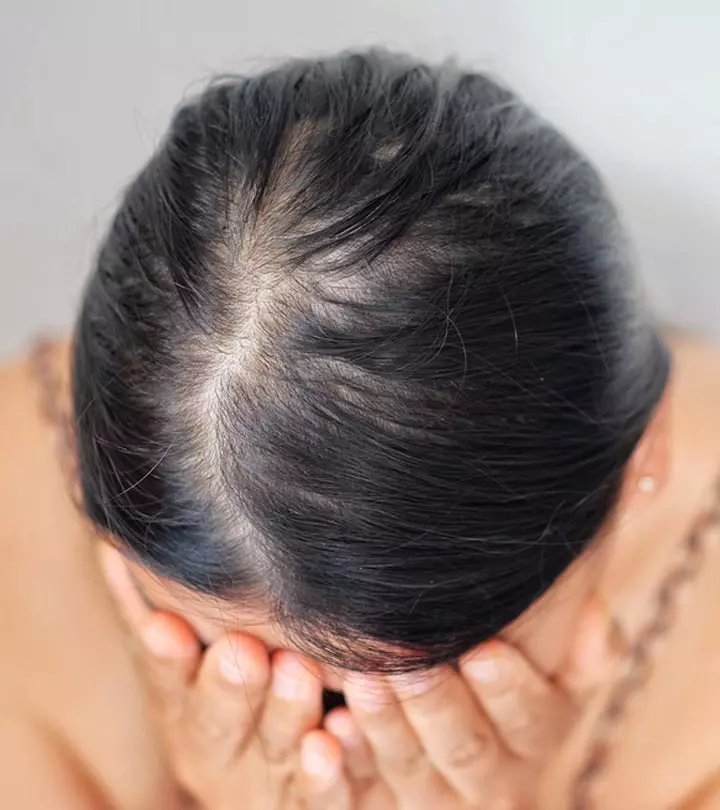
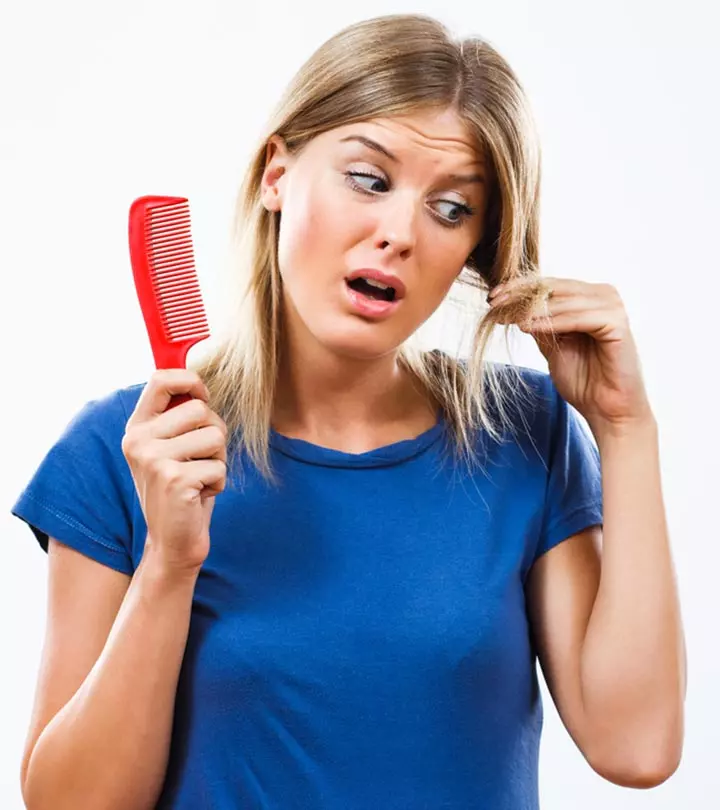



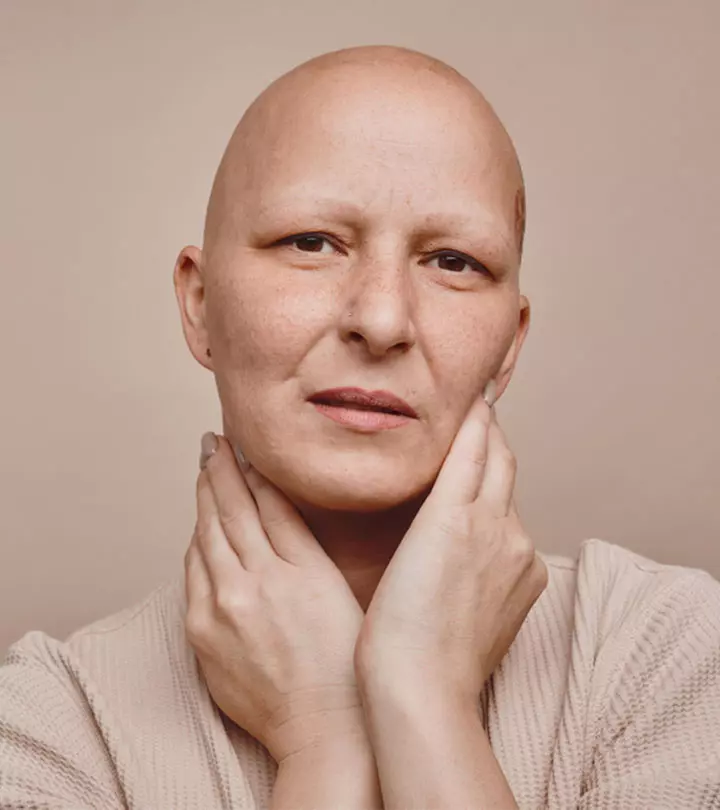






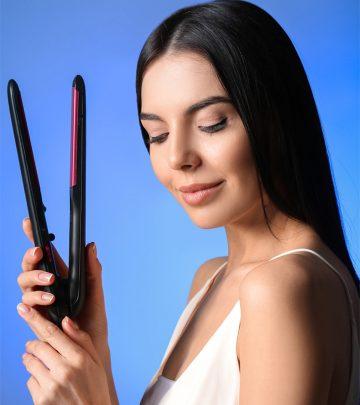

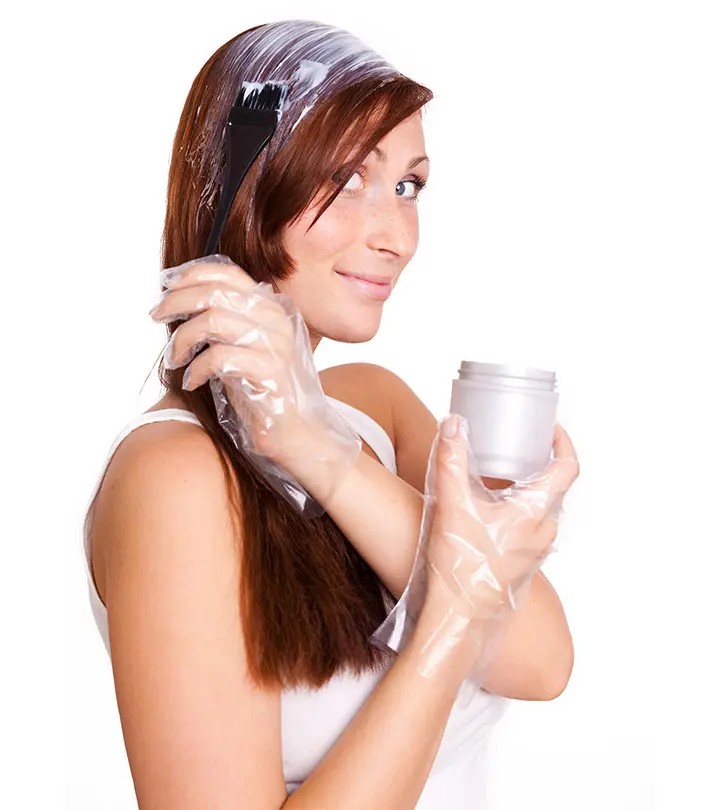
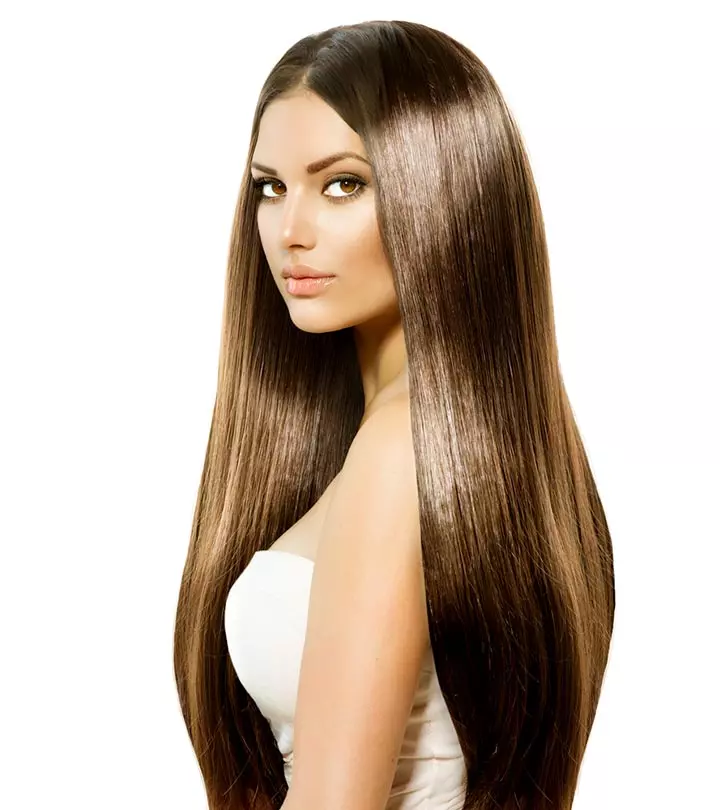
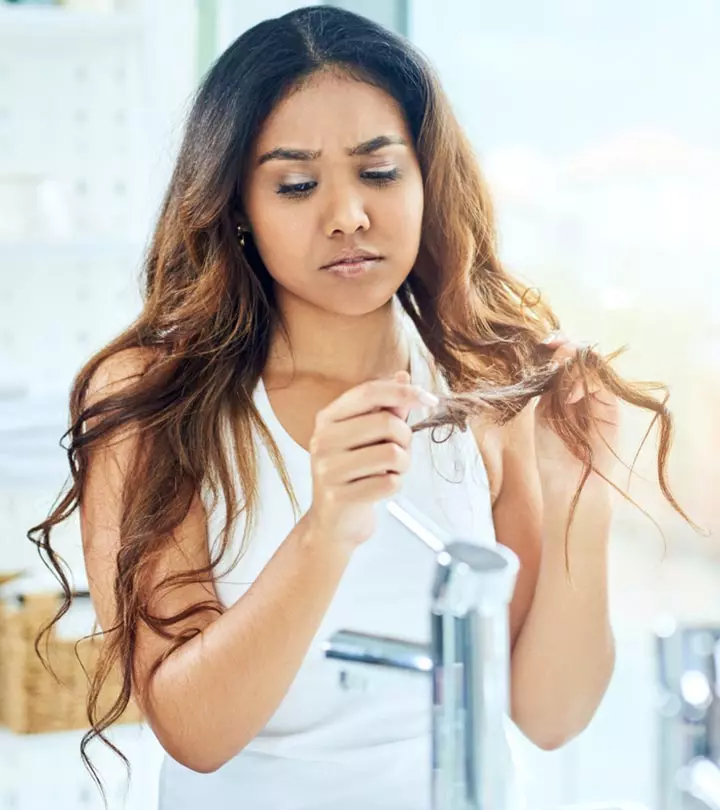
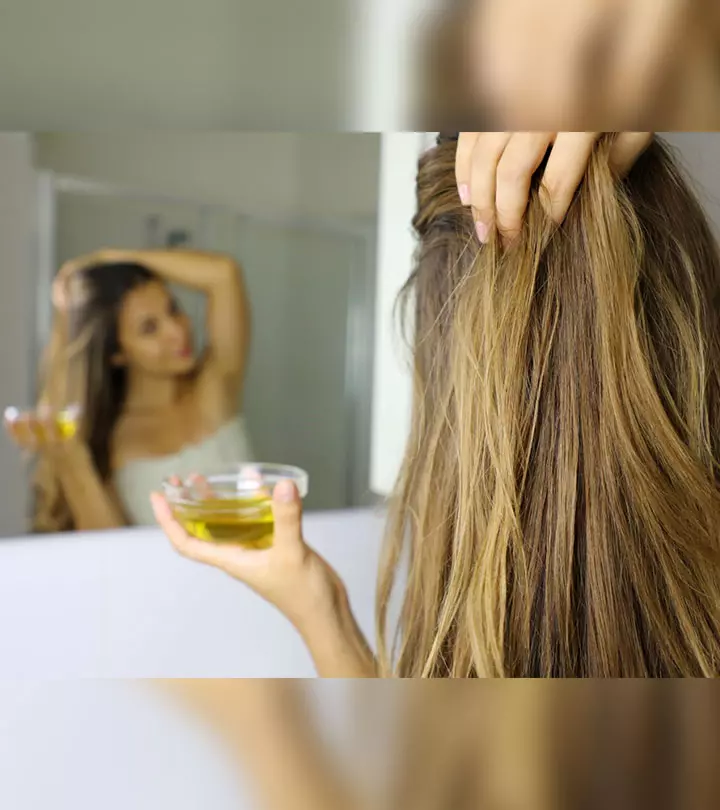
Community Experiences
Join the conversation and become a part of our empowering community! Share your stories, experiences, and insights to connect with other beauty, lifestyle, and health enthusiasts.